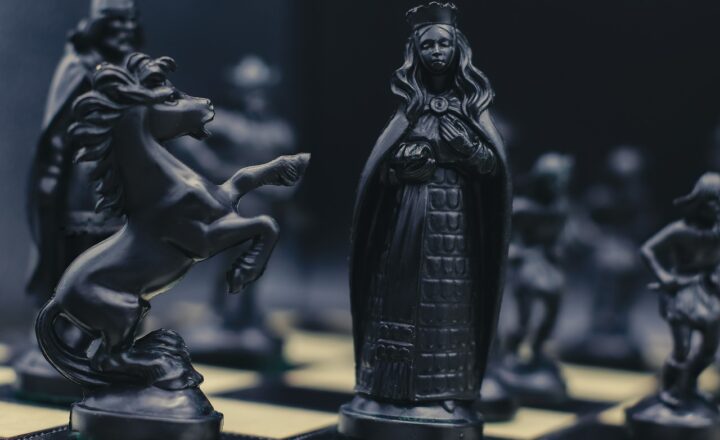The Most Unexpected Links Between Animals and Ancient Beliefs
November 17, 2024

Throughout history, animals have played a significant role in shaping human beliefs, rituals, and cultures. From ancient Egypt’s reverence for cats to the Celtic symbolism of the raven, animals have often been seen as messengers, deities, or symbols of various human traits and fortunes. In this article, we shall explore the unexpected links between animals and ancient beliefs that continue to influence our understanding of the world around us.
1. The Sacred Cow in Hinduism
In Hindu culture, the cow is regarded as a sacred animal, embodying the quintessence of life and sustenance. Revered for its gentle nature and ability to provide dairy products, the cow symbolizes motherhood and abundance. Ancient texts, such as the Vedas, mention the cow in sacred rituals and ceremonies, highlighting its importance in agrarian society.
Moreover, the reverence for cows extends beyond mere symbolism. Hinduism teaches that harming or killing a cow is a grave sin. The cow’s significance reflects the broader principle of ahimsa, or non-violence, emphasized in Hindu philosophy.
2. The Jaguar in Mesoamerican Mythology
The jaguar holds a prominent place in the mythologies of various Mesoamerican cultures, including the Maya and Aztecs. Seen as a powerful and elusive creature, the jaguar embodies strength, the underworld, and the sacred nature of nature itself. The Aztecs considered the jaguar a symbol of warfare and a protector of crops, associating it with their gods Tlaloc and Tezcatlipoca.
Moreover, jaguars are often depicted as guardians of the underworld, showing humans how to navigate the realms beyond life. The rich symbolism surrounding this creature reflects the spiritual essence tied to animal beliefs in ancient cultures.
3. The Owl as a Symbol of Wisdom and Death
Widely regarded as a symbol of wisdom across many cultures, the owl has been both revered and feared throughout history. In ancient Greece, it was associated with Athena, the goddess of wisdom, and often seen as a protector of knowledge and insight. The Greeks believed that the owl’s ability to see in the dark made it a guardian of secrets and mysteries.
However, in some cultures, owls are viewed as harbingers of death. Native American folklore, for instance, often casts the owl as a symbol of death or a messenger from the spirit world. This duality highlights the complex relationships humans have had with animals throughout history, intertwining reverence with fear.
4. The Raven in Norse Mythology
In Norse mythology, the raven is a powerful symbol associated with Odin, the all-father god. Ravens Huginn and Muninn are mythological companions tasked with gathering information across the world. Their roles emphasize the importance of knowledge and the connection between the divine and the earthly realm.
Ravens are often seen as messengers and are connected to war and death. They embody the belief that animals were not merely creatures of the earth but were intricately linked to human fate and fortune. This connection underlines the profound respect and significance ancient peoples had for animals.
5. The Wolf in Indigenous Beliefs
Many Indigenous cultures view the wolf as a powerful symbol of loyalty, family, and teamwork. The wolf’s pack mentality reflects the importance of community and cooperation, often mirrored in tribal life. In Native American traditions, wolves are considered guides and protectors, embodying the balance of nature and the significance of respecting communal relationships.
Wolves are also seen as spiritual messengers, embodying transformation and instinct. Such beliefs emphasize the deep connections Indigenous peoples established with the natural world and the animals that inhabited it.
6. The Bear as a Cultural Totem
Across various cultures, the bear is a powerful totem animal, representing strength, courage, and healing. In many Native American tribes, the bear is admired for its brute strength and resilience, symbolizing the earth’s natural forces and divine power. It also represents introspection and wisdom, as bears hibernate and emerge with transformation.
In Celtic traditions, the bear is associated with the oak tree and is considered a protective spirit, guiding one’s journey in life. Such connections highlight how cultures viewed animals not just as part of the ecosystem but as integral aspects of human spirituality and belief systems.
Conclusion: Unraveling the Links
The unexpected links between animals and ancient beliefs remind us of the interconnectedness of life, culture, and spirituality. These creatures were not isolated beings but woven into the very fabric of human existence, influencing art, religion, and social structure. Even today, understanding these connections helps illuminate our own beliefs, cultural narratives, and how we relate to the natural world.
By exploring these links, we gain insights into how ancient peoples viewed their surroundings and established traditions that transcend centuries, continuing to resonate in modern life. As we reflect on these connections, let us appreciate the rich heritage animals imparted in shaping human belief systems throughout history.








